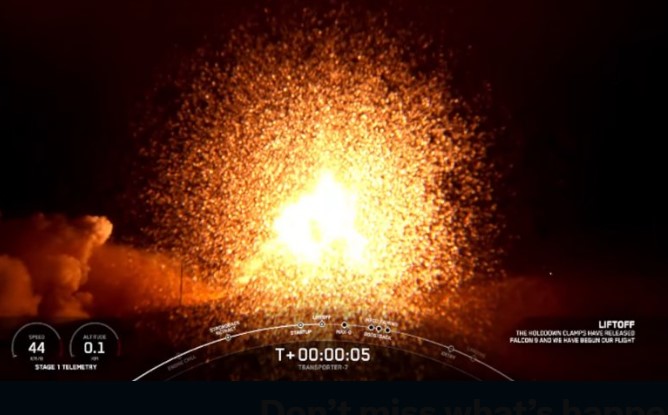Kenya has joined the thirteen African countries that have manufactured satellites after deploying its Taifa-1 satellite aboard Falcon 9 on Saturday,15.
The satellite, Taifa 1 blasted off aboard SpaceX’s Falcon-9 full-thrust rocket from Space Launch Complex 4E (SLC-4E), Vandenberg Space Force Base in the USA.
According to the Kenya Space Agency, the satellite launch was postponed three times last week due to unfavourable upper-level wind conditions” that would have affected the rocket’s flight trajectory.
The satellite launch is part of an effort by African countries to advance their space programs and scientific research.
In 1998, Egypt became the first nation in Africa to launch a satellite into orbit.
Did you read this?
1KUNS-PF experimental (temporary) CubeSat was the first Kenyan-owned satellite to be launched into space.
It was developed and assembled by the University of Nairobi (UON), with technical support from Japan Aerospace Exploration Agency, launched on 11 May 2018, from Kennedy Space Center in Florida, by a SpaceX Falcon 9 rocket, and decayed out on 11 June 2020.
According to Space in Africa, a Nigeria-based company that monitors African space programs, at least 13 African nations have produced 48 satellites as of 2022.
According to Space in Africa, more than 50 African satellites have been launched as of November 2022, but none from African land.
The Djibouti government stated in January that it had signed an agreement with a Hong Kong-based business to construct a $1 billion commercial spaceport that would take five years to complete.
The historic milestone was watched by millions online live streamed at the University of Nairobi.
In a joint statement by the Kenya Space Agency and the Ministry of Defence, they said the mission is an important milestone and would contribute significantly to the country’s “budding space economy”.
“The observation satellite is “fully designed and developed” by Kenyan engineers and will be used to provide data on agriculture and food security, among other areas, “ read part of the statement.
The testing and manufacturing of the parts were done in collaboration with a Bulgarian aerospace manufacturer, it added.









